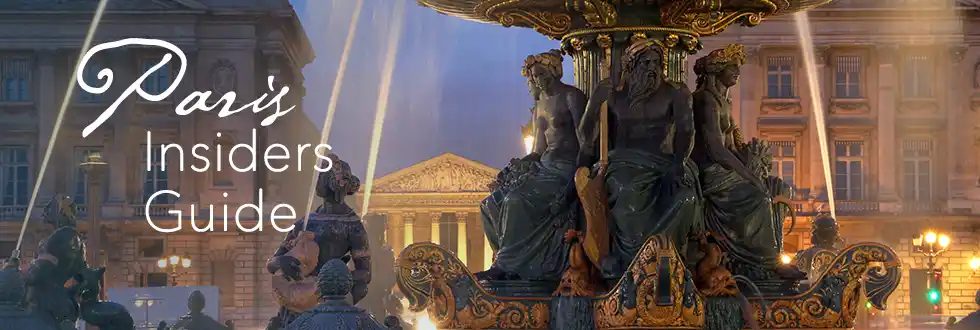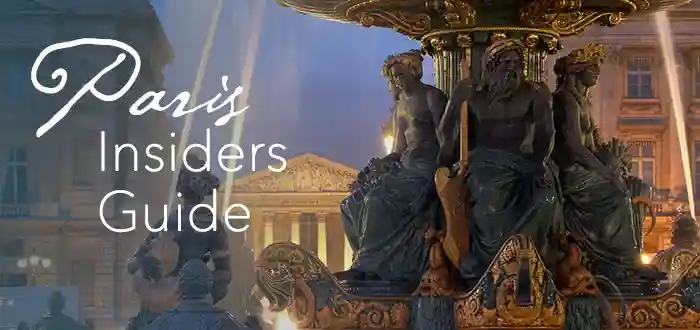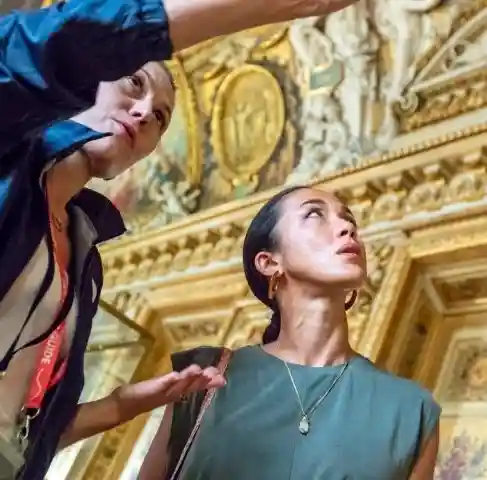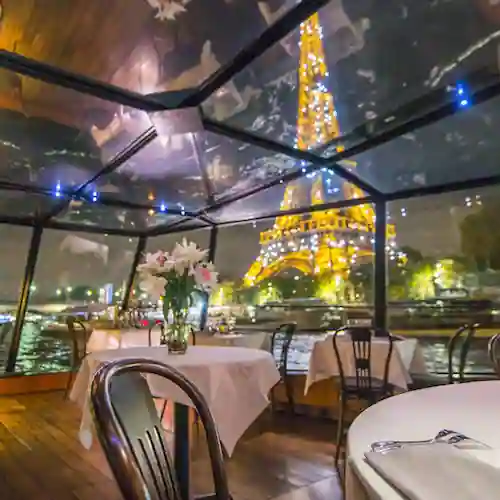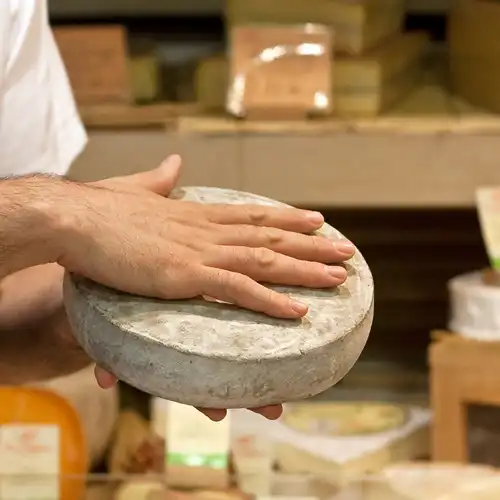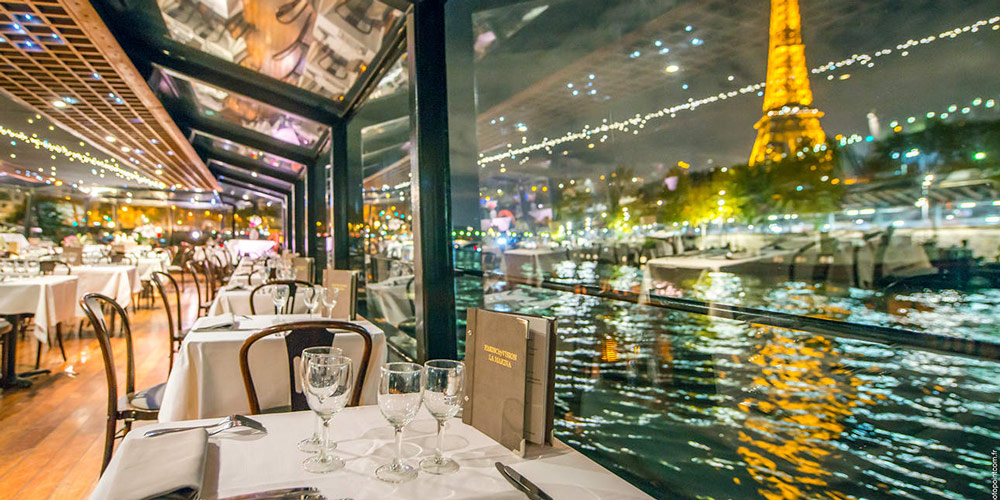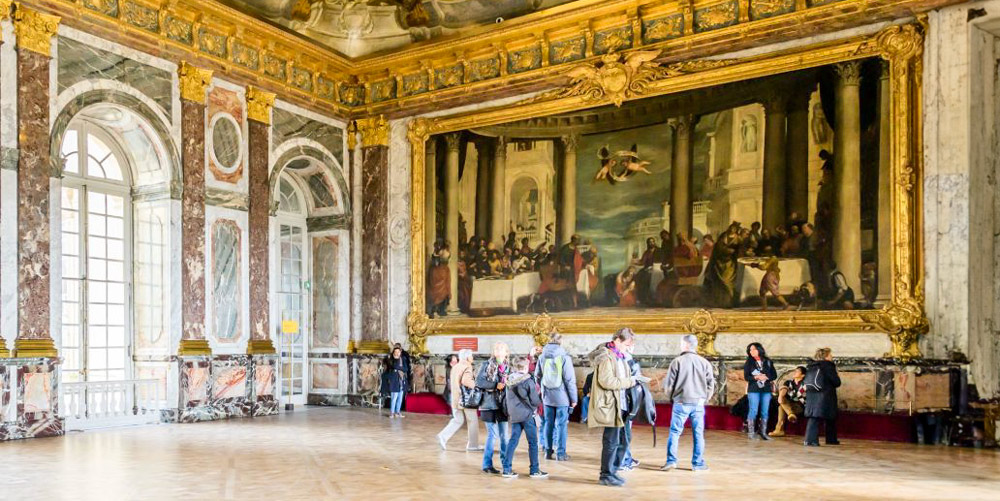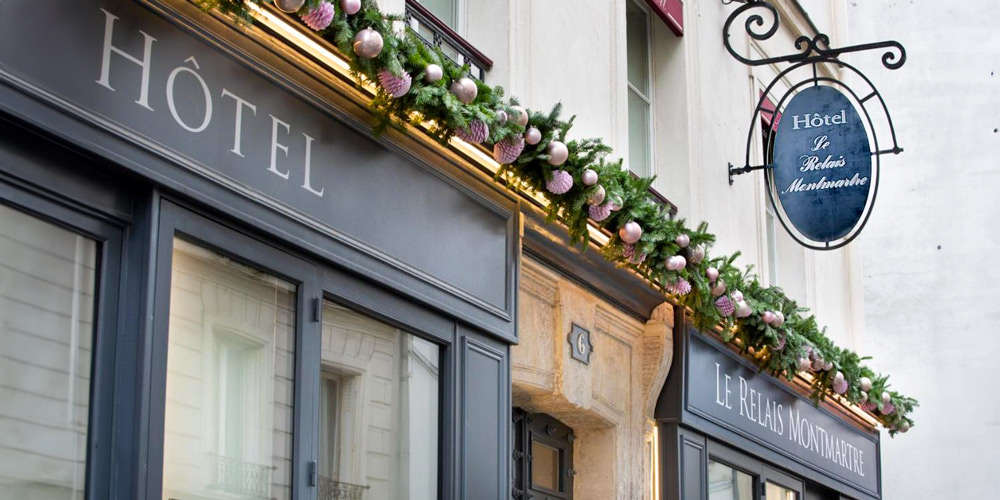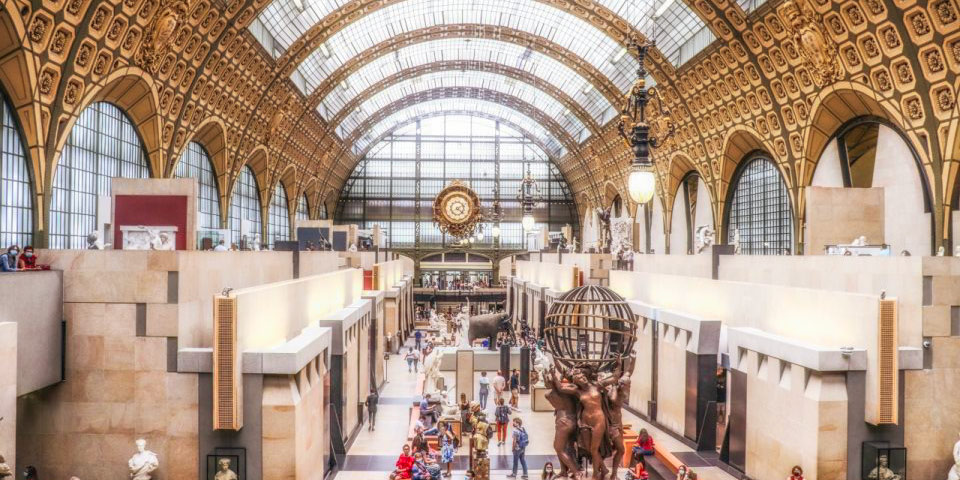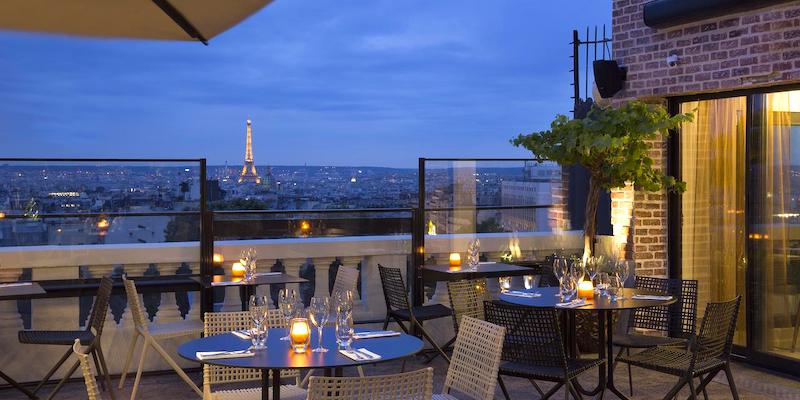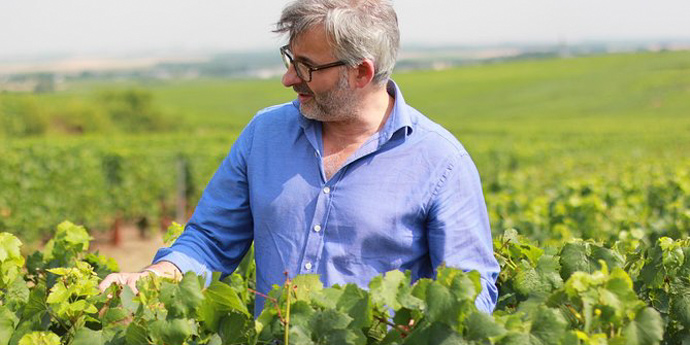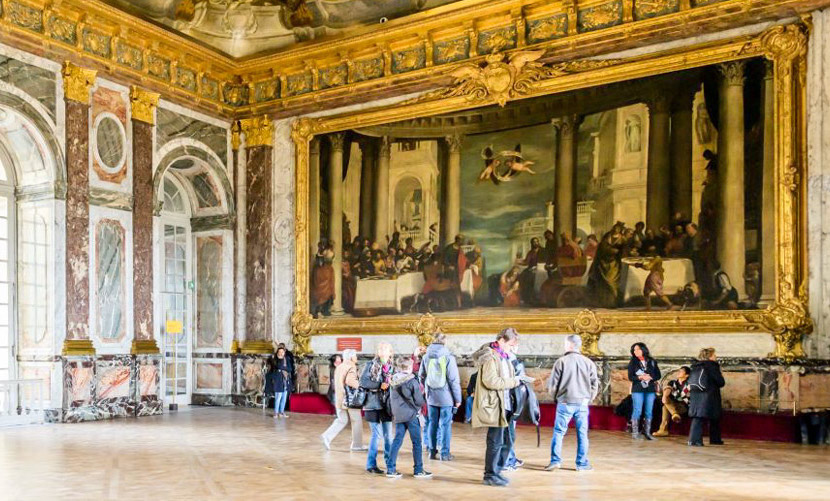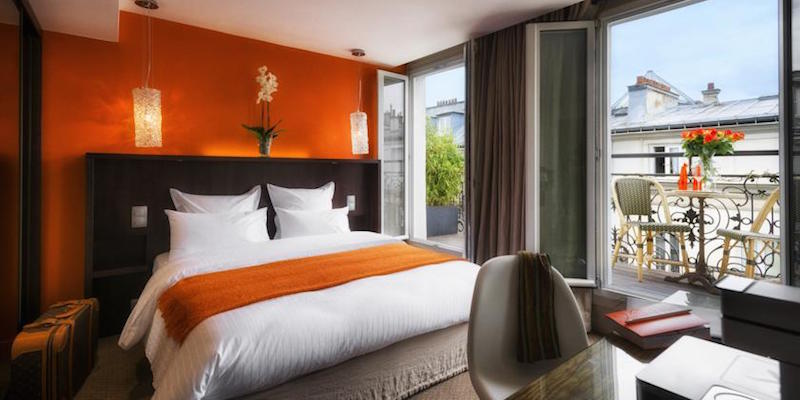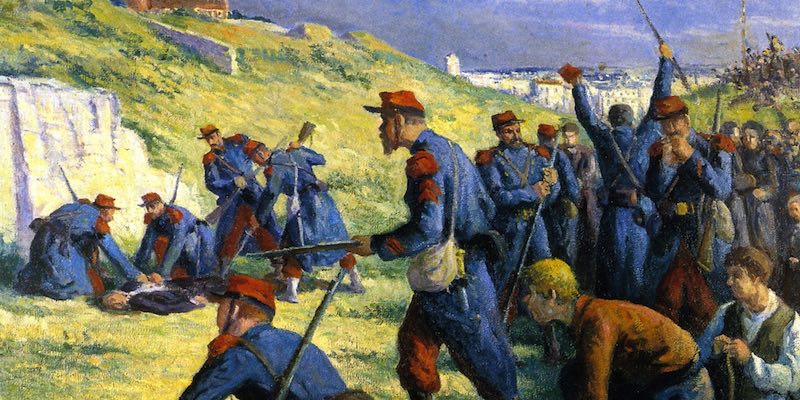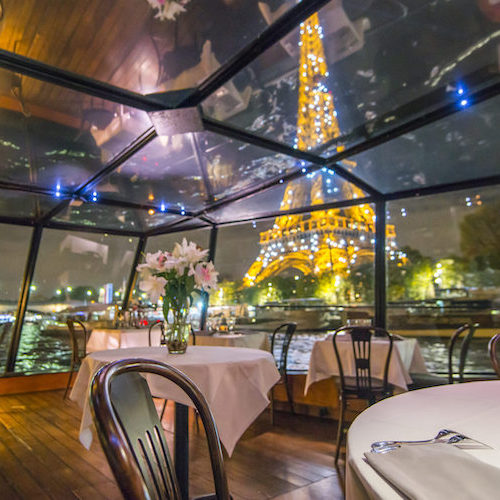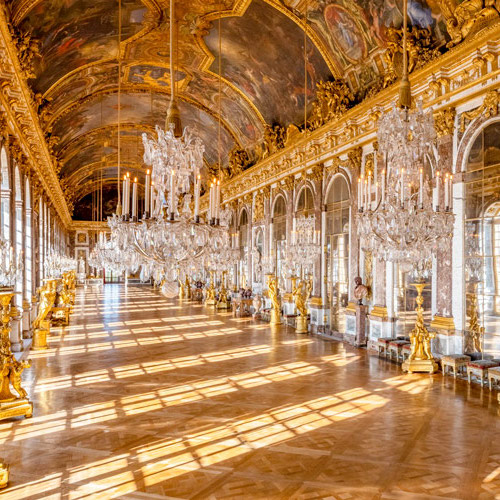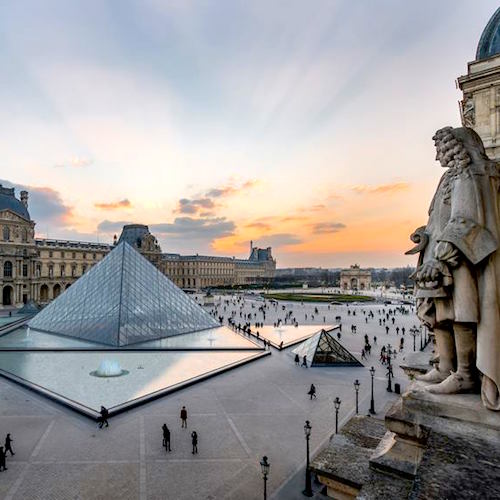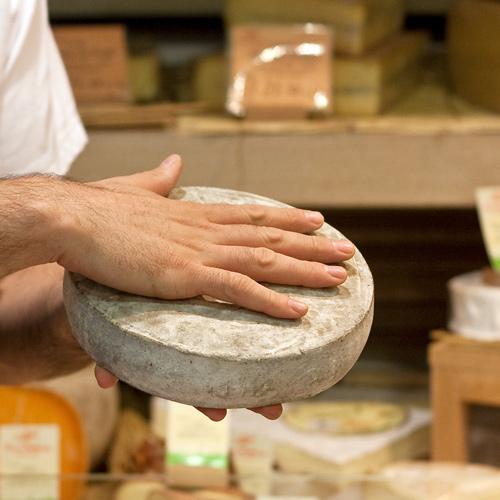Montmartre In Paris – Visiting The Bohemian Village On The Hill
Montmartre – The Bohemian Village On The Hill
Windmills, cabarets, artists, winding streets and a big white basilica. This most bohemian of Paris neighborhoods is known for its cobblestone passageways, its village atmosphere, its nightlife, a big white church, and for the artists who found a home there more than a century ago. Up on a hill sits the former village of Montmartre, where narrow streets climb and bend their way up to Sacre Coeur, the white church visible from most everywhere in Paris. Still famous for nightlife, at the foot of Montmartre you'll find Moulin Rouge and late-night bars, as well as these fifteen great things to do and see.
![]()
Our Top-Rated Montmartre Experiences
1. A Taste of Montmartre… Discovery on a gourmet walking tour
2. Dinner & Cabaret at the Moulin Rouge… Visit the legendary night spot
3. Montmartre and Sacre-Coeur Walking Tour…
4. Hotel Maison Souquet… Our #1 Montmartre pick
15 Great Things About Montmartre
1. A Taste of Montmartre Food & Wine Tour
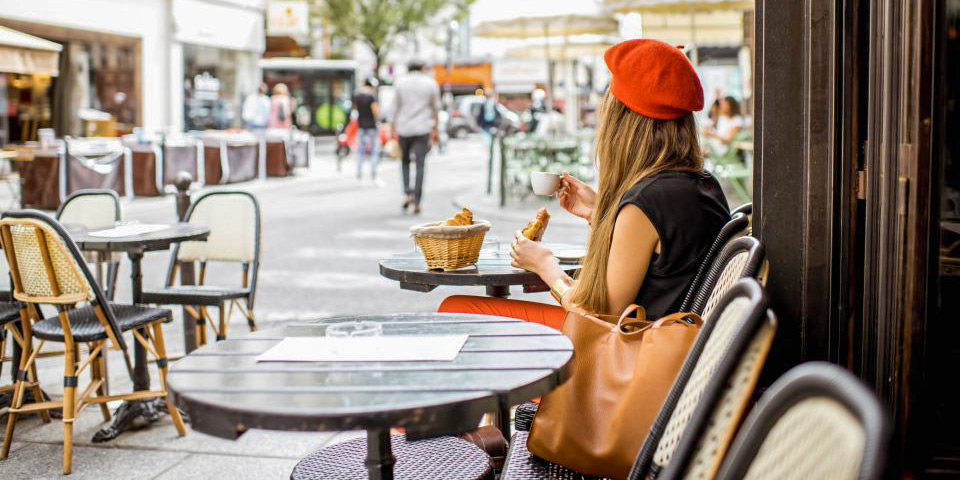 Experience the food & wine of Montmartre on a walking tour
Experience the food & wine of Montmartre on a walking tour
The best way to experience Montmartre is on foot. On this gourmet walking tour you join a food-expert guide that traverses the cobblestone streets. Visit the shops of Montmartre with the tastiest treats — from acclaimed French cheeses to perfect pastries to the best boulangerie in Paris. Not only do you meet some of the most talented food artisans in the city, you see and learn so much about this hilltop quartier.
![]()
Discover What's On When You're Here...
• January... |
• February... |
• March... |
• April... |
• May... |
• June... |
• July... |
• August... |
• September... |
• October... |
• November... |
• December... |
Discover What's On When You're Here
• January...
|
• February... |
• March... |
|---|---|---|
• April... |
• May... |
• June... |
• July... |
• August... |
• September... |
• October... |
• November... |
• December... |
2. Hotel Maison Souquet
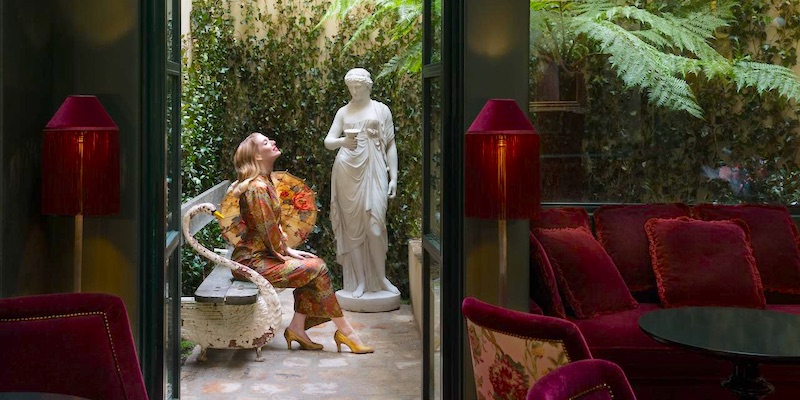 In the winter garden of Maison Souquet
In the winter garden of Maison Souquet
Set in a 19th-century hotel particulier (private mansion) with Belle Époque period decor, Maison Souquet envelops guests in lush, tranquil rooms and suites. Found just off Place Blanche the luxurious hotel features a winter garden, an indoor swimming pool and a spa. Choose from deluxe rooms, junior suites, even a two-bedroom suite.
Our Rating — Superb-Plus!
• 10 rue de Bruxelles
![]()
Delectable Food Tours in Paris
|
Discover the Food & Wine of the Marais |
Cheese & Wine Tasting in a Paris Cellar |
|
Cheese & Wine Tasting in a Paris Cellar |
3. Moulin Rouge Cabaret
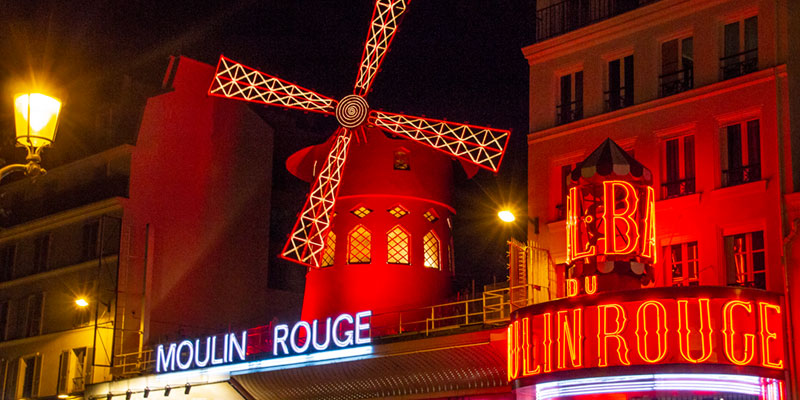 The unmistakable red signage of Moulin Rouge, photo by Mark Craft
The unmistakable red signage of Moulin Rouge, photo by Mark Craft
1889 was a stellar year for Paris. The Eiffel Tower was unveiled and the Moulin Rouge, with its signature bright red windmill, opened its doors. Painter Toulouse-Lautrec immortalized the sizzling cabaret with his colorful posters. More than a century later, Moulin Rouge endures and still attracts locals as well as an international crowd.
Located at the foot of Montmartre, the massive red windmill announces this iconic cabaret. Arrive in time for dinner, where you can dine on a menu named after the artist himself — the Toulouse-Lautrec Menu. Afterwards, as you sip champagne, marvel at renowned cabaret with one hundred performers in feathers, rhinestones, and sequins, and recall its place in history as the birthplace of the French can-can.
4. Hotel des Arts
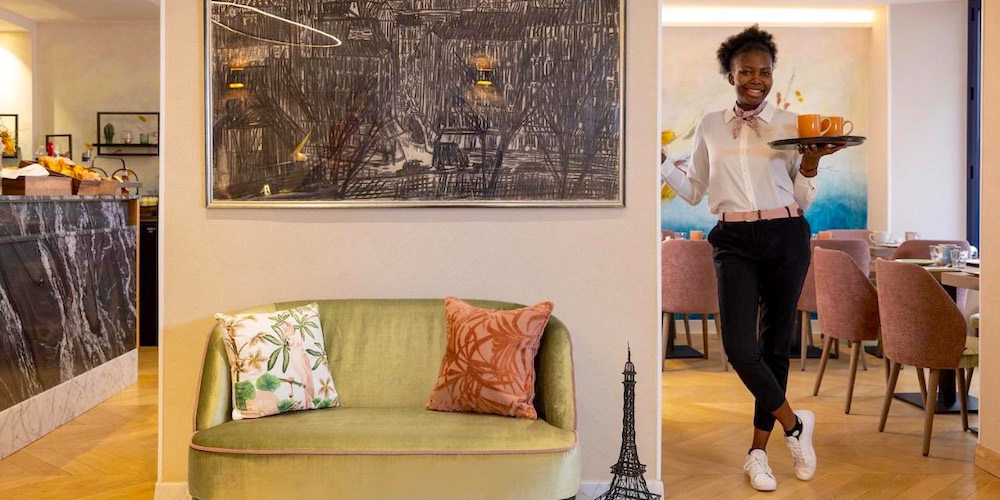 Hotel des Arts: calm quiet in the center of Montmartre
Hotel des Arts: calm quiet in the center of Montmartre
Located on a quiet side street just off Rue Lepic, Hotel des Arts was named in honor of the likes of Picasso, Renoir, and Matisse, all of whom spent time in Montmartre. It's right in the center of all things Montmartre, yet it remains an oasis of calm. Travelers write about the clean rooms, great service, and great location. We give it our top rating of Superb-Plus!. (Yes, the exclamation point is part of the rating.)
Our Rating — Superb-Plus!
• 5 rue Tholoze
![]()
|
Paris Dinner Cruises on the Seine Dine in style as you glide past the Eiffel Tower, Notre-Dame, and the Louvre on a magical Seine River cruise. Gourmet food, champagne, and Paris lit up at night – it’s unforgettable. |
|
Paris Dinner Cruises on the Seine Dine in style as you glide past the Eiffel Tower, Notre-Dame, and the Louvre on a magical Seine River cruise. Gourmet food, champagne, and Paris lit up at night – it’s unforgettable. |
5. Basilica Sacre-Coeur
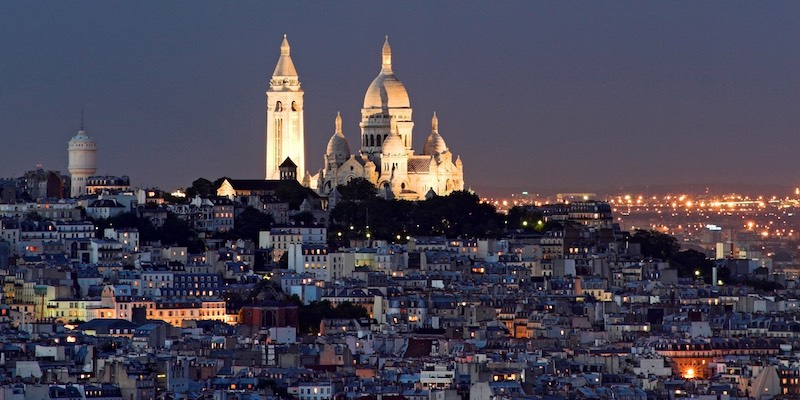 The famous white domes of Basilica Sacre-Coeur at night
The famous white domes of Basilica Sacre-Coeur at night
There's no better view of Paris than from atop the steps of Basilica Sacre-Coeur, the snow-white church begun in 1875 and completed in 1919! Set on the hill of Montmartre, it's the highest point in Paris (higher than the Eiffel Tower).
As you enter the basilica you discover a certain magical quality, no matter what your beliefs. Climb the 237 steps up to the dome for a spectacular 30-mile-wide view of Paris. If you want to learn more about the fascinating history of Sacre-Coeur, we recommend this walking tour that traces the history of both Montmartre and the gleaming white basilica.
6. Bust of Dalida
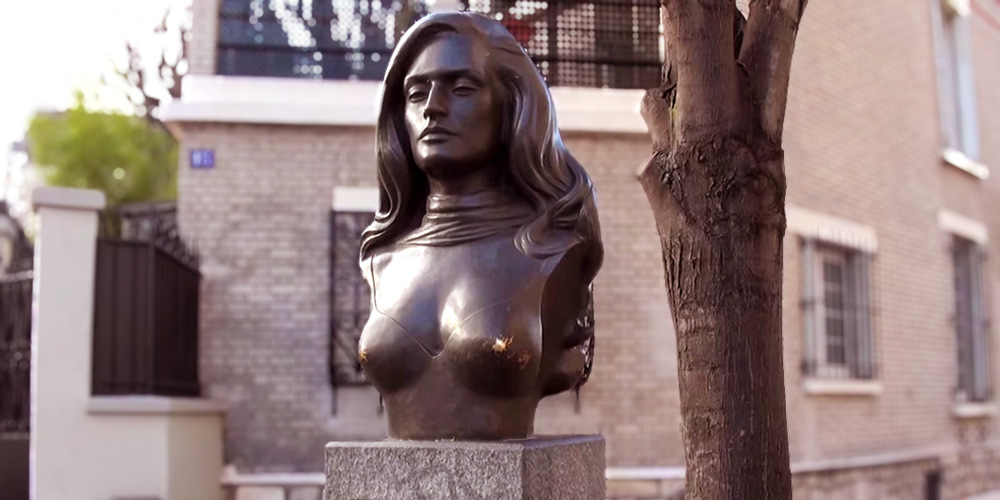 Bust of the singer Dalida, Place Dalida, photo Wikimedia by amiella
Bust of the singer Dalida, Place Dalida, photo Wikimedia by amiella
Born in Egypt to Italian parents in 1933, the singer known as Dalida adopted France and Montmartre in particular, and the country adopted her in return, making her a musical sensation. Her name may not be familiar now, but she sold 140 million records in her lifetime. So great was her love of Montmartre that there is now a place named for the singer that features a statue (a bust) of Dalida by the French artist Aslan. Dalida is buried in the Montmartre Cemetery.
![]()
|
Trade Paris bustle for royal grandeur on a guided Versailles tour. Skip the lines, wander the gardens, and peek inside Marie Antoinette’s private estate. History never looked this good. |
|
Trade Paris bustle for royal grandeur on a guided Versailles tour. Skip the lines, wander the gardens, and peek inside Marie Antoinette’s private estate. History never looked this good. |
7. Le Relais Montmartre
It's in the world of classic, French boutique hotels that Le Relais Montmartre resides. Its 26 rooms are each decorated in beautiful floral prints with modern amenities like air conditioning. Set on a quiet street, the best of Montmartre is a short walk away. Guests rave about the easy access to Moulin Rouge, the hearty breakfasts, and the recently refurbished rooms.
Our Rating — Superb
• 6 Rue Constance
8. Place des Abbesses
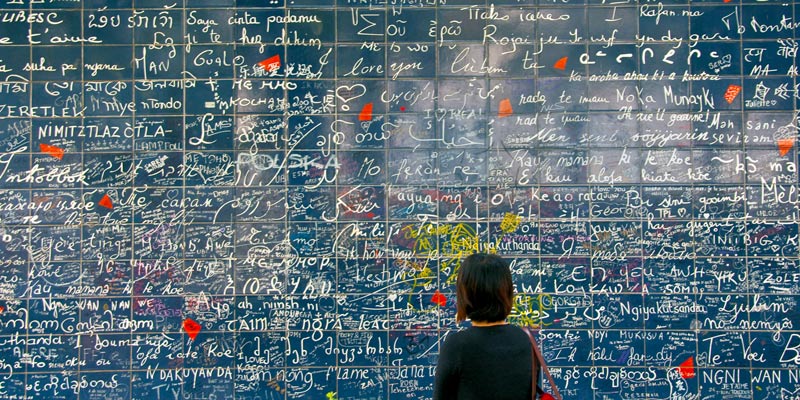 Wall of Love tile mosaic, Square J. Rictus, photo by Mark Craft
Wall of Love tile mosaic, Square J. Rictus, photo by Mark Craft
If you arrive in Montmartre by Metro the first site that will greet you is the pleasant Place des Abbesses. (When you get off the train at the Abbesses station (line 12 to) make sure to use the elevator instead of the stairs — it's a long way up!) The first thing you see is the year-round carousel in the place and. Turn around and admire the Hector Guimard designed Art Deco Metro entrance from 1900. Then, take a few minutes to visit Square J. Rictus, a small park on the north side of the place. Rest on a bench and look at the unusual mural tile installation on the many ways to say "I love you".
![]()
|
Skip the lines and join an expert-led tour through the Musée d'Orsay — home to Van Gogh, Degas, and Monet. It’s the ultimate walk through 19th-century art in a grand old train station. |
|
Skip the lines and join an expert-led tour through the Musée d'Orsay — home to Van Gogh, Degas, and Monet. It’s the ultimate walk through 19th-century art in a grand old train station. |
9. Le Terras' Hotel Montmartre
Set high on a hill, the best of Paris can be seen from the hotel's rooftop terrace, from the Eiffel Tower to Sacre Coeur. Guests love the elegantly decorated rooms with a bold red, black and white color scheme. Then there's the added benefit of air conditioning. The hotel also has a library/reading room, a billiards table, arcade games, and two fitness areas.
Our Rating — Superb
• 14 Rue Joseph De Maistre
10. Dalí Paris
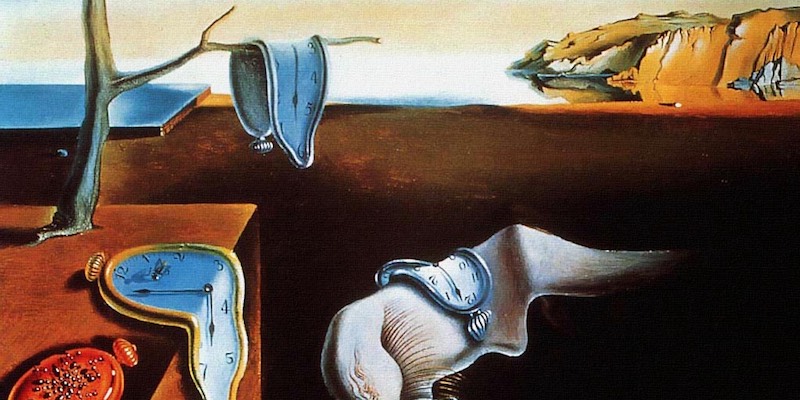 One of Salvador Dali's most famous works
One of Salvador Dali's most famous works
This museum devoted to Salvador Dali, the master of Surrealism, is located at the top of Montmartre, on Place du Tertre. It's more of a commercial enterprise than are most Paris museums, but there are two floors of some of Dali's best paintings, sculptures, drawings, and cartoons.
In case you've forgotten your French art history, Salvador Dali (1904 to 1989) was born in Spain, near the French border. Like his countryman, Picasso, Dali didn't complete art school (Picasso dropped out, Dali was expelled). The two artists met in Paris in 1926 and Picasso's influence can be seen in Dali's early works. Dali dabbled in everything — photography, sculpture, film, fashion, and theatre. Check to see what temporary exhibits are showing at Espace Dali.
- 11 Rue Poulbot
- Museum Website…
![]()
The Best Evenings in Paris
|
Dinner & Cabaret at the Moulin Rouge |
VIP Dinner Cruise with Bateaux Parisiens |
|
Dinner & Cabaret at the Moulin Rouge |
11. Artists & Writers of Montmartre
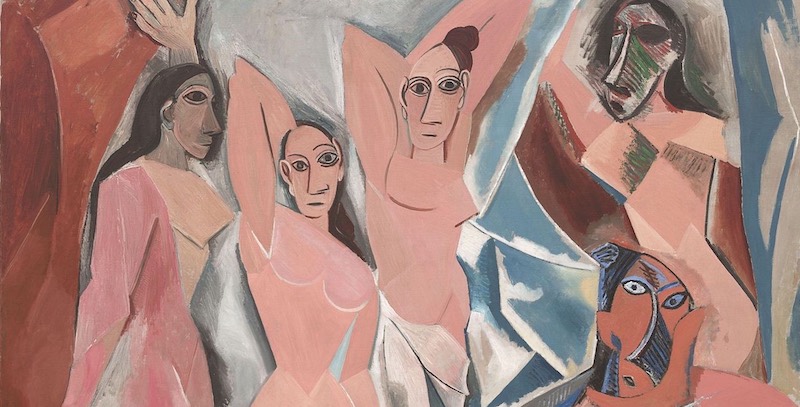 Les Demoiselles d'Avignon, 1907, by Picasso
Les Demoiselles d'Avignon, 1907, by Picasso
Strolling the cobblestone streets of Montmartre at the turn of the 19th century you might have encountered Renoir, Pissarro, or even van Gogh. Renoir worked at 12 Rue Cartot in 1876 when he painted Bal du Moulin de la Galette. Van Gogh lived on the north slope of the hill. A couple of decades later giants of 20th century art congregated on Montmartre, the only place they could afford to live in Paris. Think of Max Jacob, Modigliani, Matisse, Jean Cocteau, even composer Erik Satie. Perhaps most famously, it's where Picasso painted his breakthrough masterpiece, Les Demoiselles d'Avignon.
12. Local Life in Montmartre
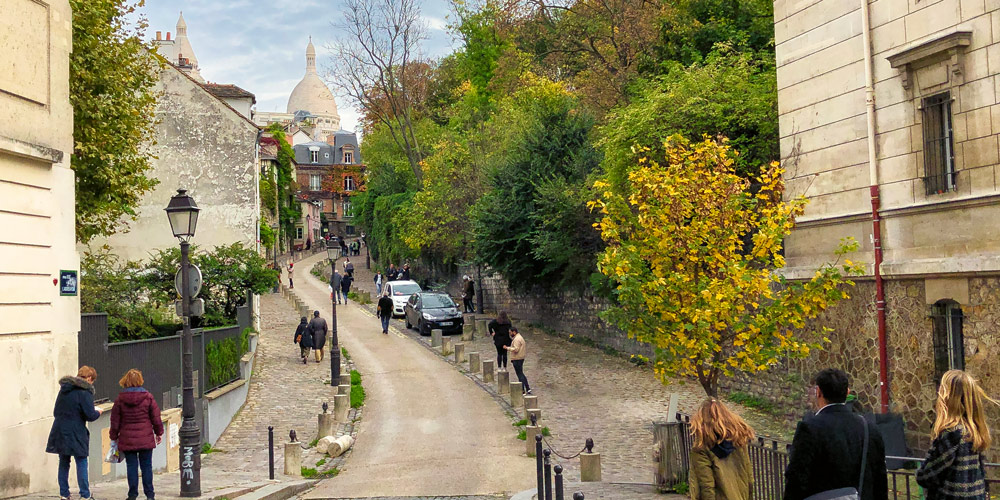 In Montmartre, photo by Mark Craft
In Montmartre, photo by Mark Craft
Montmartre is much more than nightlife and a church. There's a real sense of local life here with restaurants, streets, and shops to explore. Recently, Montmartre has also become known for its top-notch boulangeries, ranking high in the city's annual best baguette competition. Plan to spend at least a part of a day in Montmartre. Get off the beaten track and seek out spots like Espace Dali, or the site of Picasso's famous early studio. Let's take a walk around to discover what else is great about this quaint quartier.
![]()
|
Escape to the Land of Bubbly on a small-group day tour from Paris. Taste at top Champagne houses, meet boutique producers, enjoy a leisurely lunch, and toast to a perfectly sparkling day. |
|
Escape to the Land of Bubbly on a small-group day tour from Paris. Taste at top Champagne houses, meet boutique producers, enjoy a leisurely lunch, and toast to a perfectly sparkling day. |
13. The Old Village of Montmartre
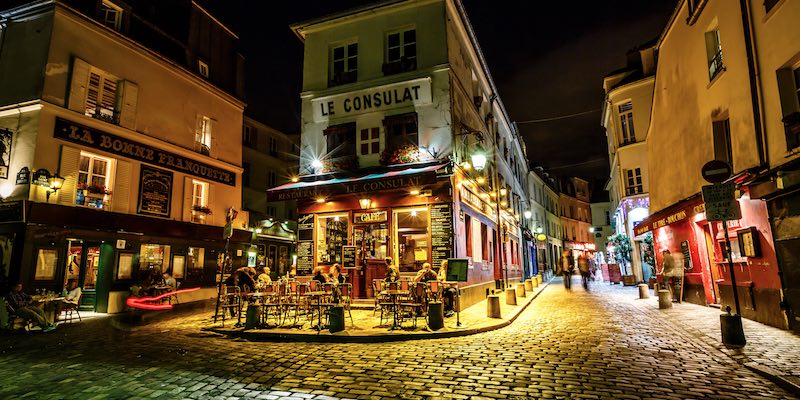 In the center of the old village of Montmartre
In the center of the old village of Montmartre
Montmartre began life as a hilltop village, surrounded by vineyards and farmland, and commanding a lovely view of Paris at the bottom of the hill. Its rural tranquility was disturbed during the Napoleonic Wars when the Russian army used it as a base to bombard Paris in 1814.
The village thrived commercially when a tax wall was built around Paris in 1785. Montmartre, being outside the walls, was a center for business wanting to avoid taxation and the cafes and bars that served them. (The wall was called le mur des fermiers généraux and existed solely to make it easier to collect takes on goods entering Paris. The wall was torn down by Haussmann and replaced with Boulevards Courcelle, Batignolles, Clichy, Rochechouart, and Chapelle. Today, this is also the route followed by Metro Line 2.)
Incorporated into the city of Paris in 1860, Montmartre managed to retain its rural aspects for decades. Today the old village still exists on the top of the hill, centered around Place du Tertre. It's a destination for many visitors to Paris, but retains a certain charm and an aura of its village past.
![]()
Our Top-Rated Paris Experiences
14. Our Favorite Eyeglasses Store in Paris
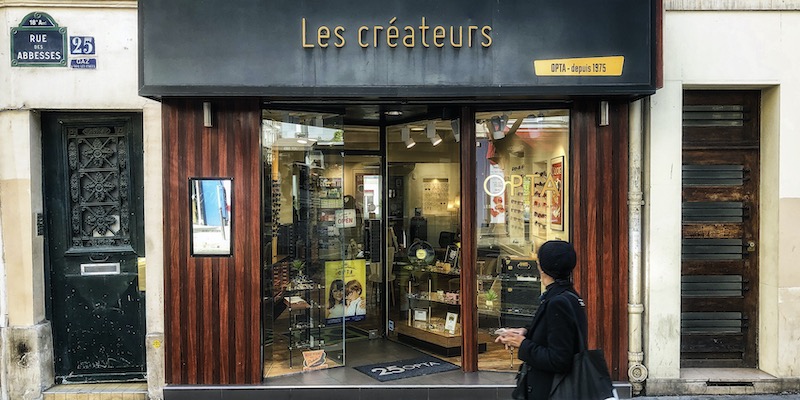 Les Createurs d'Opta, photo by Mark Craft
Les Createurs d'Opta, photo by Mark Craft
The way we figure it, most everyone in Paris gets their hair done daily and changes their eyeglass frames monthly. At least that's how it seems from the number of hair salons and eyeglass boutiques. Among all these, the place we like to buy our eyeglass frames is right up here in Montmartre, Les Créateurs d'Opta. The staff have been very good at showing us the perfect frames for our needs and they have a nice selection of hard-to-find designer frames. In fact, we bought another cool designer frame on our last visit to Montmartre. Do what we do — buy your frames when you're in Paris and have your optician at home fit the lenses.
- 25 Rue des Abbesses
- Website…
15. Amélie
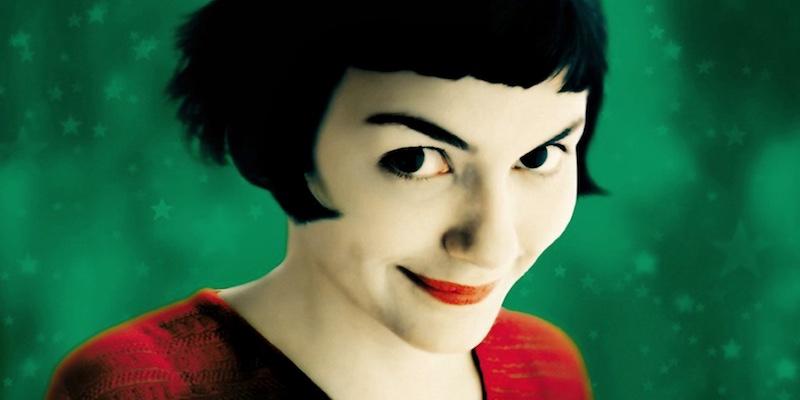 Audrey Tautou as title character Amélie
Audrey Tautou as title character Amélie
The quirky, romantic filmthat made Audrey Tautou a star takes place in a somewhat-romanticized Montmartre, and is a total delight. Montmartre is definitely the co-star of the movie. Amélie herself works at Café des 2 Moulins, still located at 15 Rue Lepic.
Amélie is not the only movie set in Montmartre. Think of Moulin Rouge and parts of Woody Allen's Midnight in Paris. A fun way to learn about the films shot here, and about the neighborhood itself, is on a movie tour of Montmartre, along with an expert guide.
![]()
|
Browse our hand-picked Paris hotel deals with real-time discounts of up to 20%. Stay in the Marais, Saint Germain, the Latin Quarter, the Left Bank near the Eiffel Tower… every arrondissement is on the list. |
|
Browse our hand-picked Paris hotel deals with real-time discounts of up to 20%. Stay in the Marais, Saint Germain, the Latin Quarter, the Left Bank near the Eiffel Tower… every arrondissement is on the list. |
Montmartre Resources
- Montmartre was a hilltop village surrounded by vineyards and fields, with windmills erected to take advantage of the winds that swept up over the hill. A couple of windmills still exist as well as a small plot of vines that produce the only wine grown in Paris.
- It wasn't until 1860 that Montmartre was added to Paris during the expansion of the city under Emperor Napoleon III and his city planner, Baron Haussmann.
- Montmartre Metro. Line 2, which arcs across the north of Paris from Etoile to Nation, can get you to the flat area at the foot of the hill, to stations Blanche & Anvers. But there's only Metro that takes you up the hill — Line 12 at station Abbesses.
Montmartre History: The Commune of 1871
Napoleon II thought he could do no wrong. He had easily taken power in 1848, proclaimed himself emperor, and had spent fifteen years completely transforming Paris from a medieval city of narrow dark streets into a modern capital of broad, tree-lined boulevards. Heck, he even had a brand-new sewer system built.
So, when the Prussians teed him off in 1870 he didn't hesitate to go to war. Bad move. Within a short time the French army was defeated, Napoleon III had taken himself off into exile, and the Prussians subjected Paris to a four-month siege and great hardship.
The Prussians finally left, following a peace brokered by the new government of France. But a radical group in Montmartre wasn't about to let the government get away with its mismanagement and its treaty with Prussia. The Commune, as they named themselves, quickly spread from the working class of Montmartre to the other areas of Paris
The French government (the Third Republic) was forced to move to Versailles and a sort of socialist republic was established in the city. Anarchist Louise Michel became known as the Red Virgin of Montmartre and remains a legend of the Commune. The uprising ended on May 28, 1871, when Eugene Varlin, one of its leaders, was shot by government soldiers on Montmartre. The Paris Commune lasted only about ten weeks, but was marked by many deaths and the destruction of sections of the city, including the Hotel de Ville and the Tuileries Palace (which was never rebuilt). In the end, as many as 20,000 were killed and 40,000 Communards were arrested or deported.
Paris Planning Guides
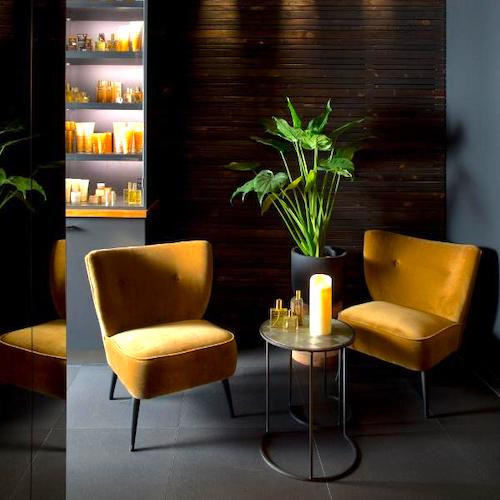 Top Montmartre Hotels
Top Montmartre Hotels |
 Top Wine Events
Top Wine Events |
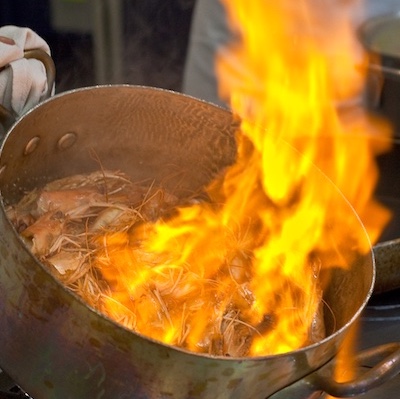 Top 10 Food Tours
Top 10 Food Tours |
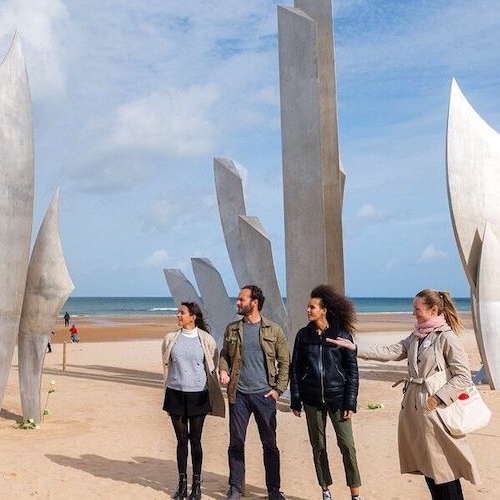 Historic D-Day Tours
Historic D-Day Tours |
